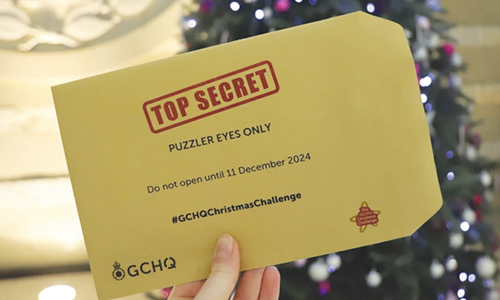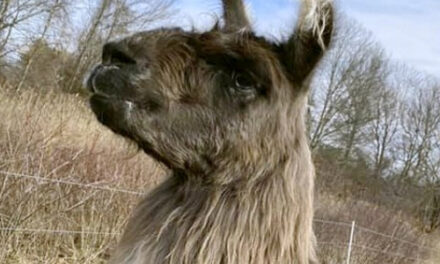London (AP) — What does a spy agency give for Christmas? How about a riddle wrapped in an enigma inside a mystery.
GCHQ, Britain’s electronic and cyber-intelligence agency, on Wednesday published its annual Christmas Challenge – a seasonal greeting card that doubles as a set of fiendishly difficult puzzles designed to excite young minds about solving cyphers and unearthing clues.
The challenge is aimed at young people aged 11 to 18, who are encouraged to work in teams and use “lateral thinking, ingenuity and perseverance” to crack the seven brainteasers set by GCHQ’s “in-house puzzlers.”
 The card is sent by the head of GCHQ — short for Government Communications Headquarters — to other national security chiefs around the world. Puzzles were first included in 2015 and have become an annual tradition. The card can be downloaded from the GCHQ website, and has become popular with teachers – the agency says a third of British secondary schools have downloaded it.
The card is sent by the head of GCHQ — short for Government Communications Headquarters — to other national security chiefs around the world. Puzzles were first included in 2015 and have become an annual tradition. The card can be downloaded from the GCHQ website, and has become popular with teachers – the agency says a third of British secondary schools have downloaded it.
The agency admits the festive fun has an ulterior motive.
GCHQ Director Anne Keast-Butler said she hoped the card would inspire young people to explore STEM subjects – science, technology, engineering and mathematics – “and to consider what a career in cybersecurity and intelligence might have to offer.”
It also aims to dispel some myths about intelligence work, fueled by super-agent James Bond and other fictional spies.
GCHQ’s “chief puzzler,” Colin, said the challenge is best solved by teamwork, in contrast to the popular image of the lone genius or solo secret agent.
“Don’t get me wrong – we have geniuses in the department,” said Colin, who gave only his first name because of the secret nature of his work. “But critically what we have is a large number of people with different skills coming together.
“The skills we want are quite diverse. We like analytical skills but also lateral thinking skills. And we like the idea with some of these puzzles that it involves a certain amount of perseverance to get to the answer.”
The card features a map of the U.K., linked to the locations where GCHQ has bases, including its high-tech headquarters in Cheltenham, western England, nicknamed the doughnut because of its shape.
Many British people are keen puzzle-solvers, and the link between puzzlers and spycraft is often celebrated – notably in the many books, films and TV shows about Bletchley Park, a complex of buildings and wooden huts northwest of London where, during World War II, hundreds of mathematicians, cryptologists, crossword puzzle experts and computer pioneers worked to crack Nazi Germany’s secret codes.
Historians say their work shortened World War II by as much as two years.
Colin said that among new recruits to GCHQ, “we now hear more and more that they first heard of GCHQ through puzzling.”
“It definitely inspires people.”
Technology has advanced immeasurably since the days of Bletchley Park, but — reassuringly — making and solving puzzles is one area that still needs the human touch.
“AI doesn’t have a good record either setting or solving puzzles, not of this sort,” Colin said. “It is still the case that people are able to set interesting puzzles in a way that AI isn’t – thank goodness.”









